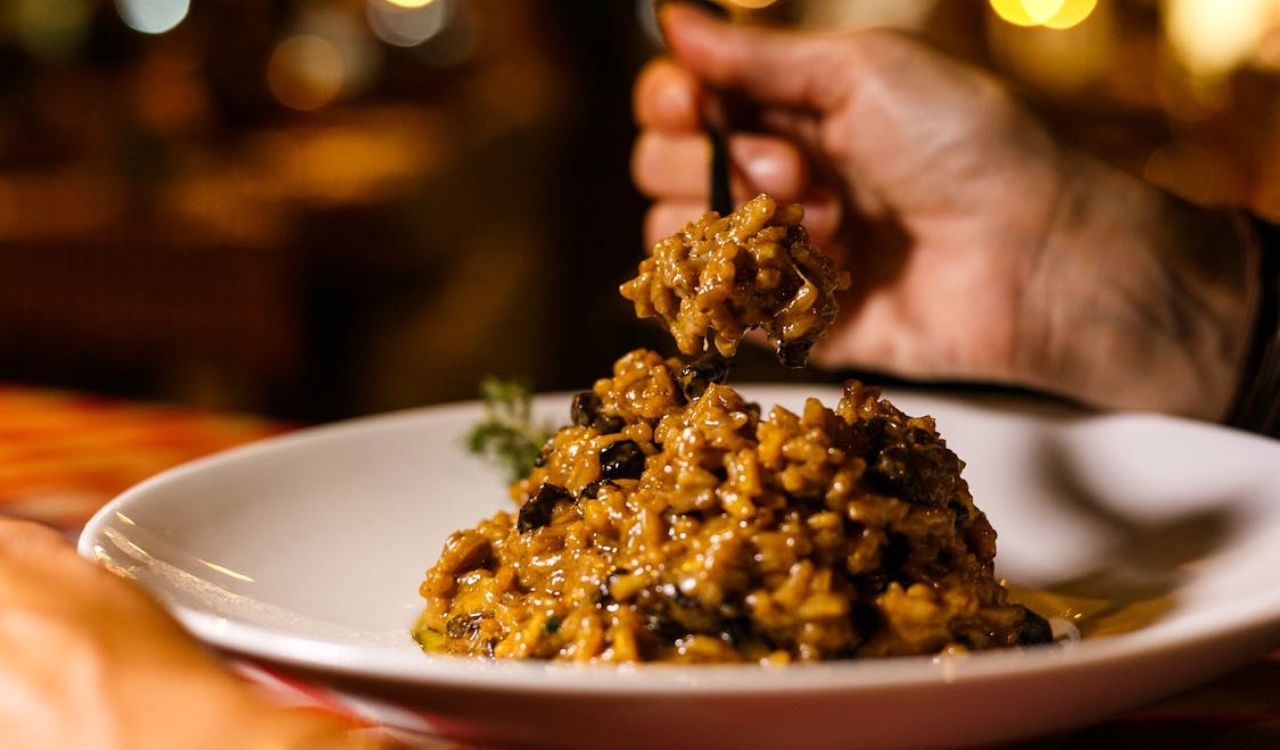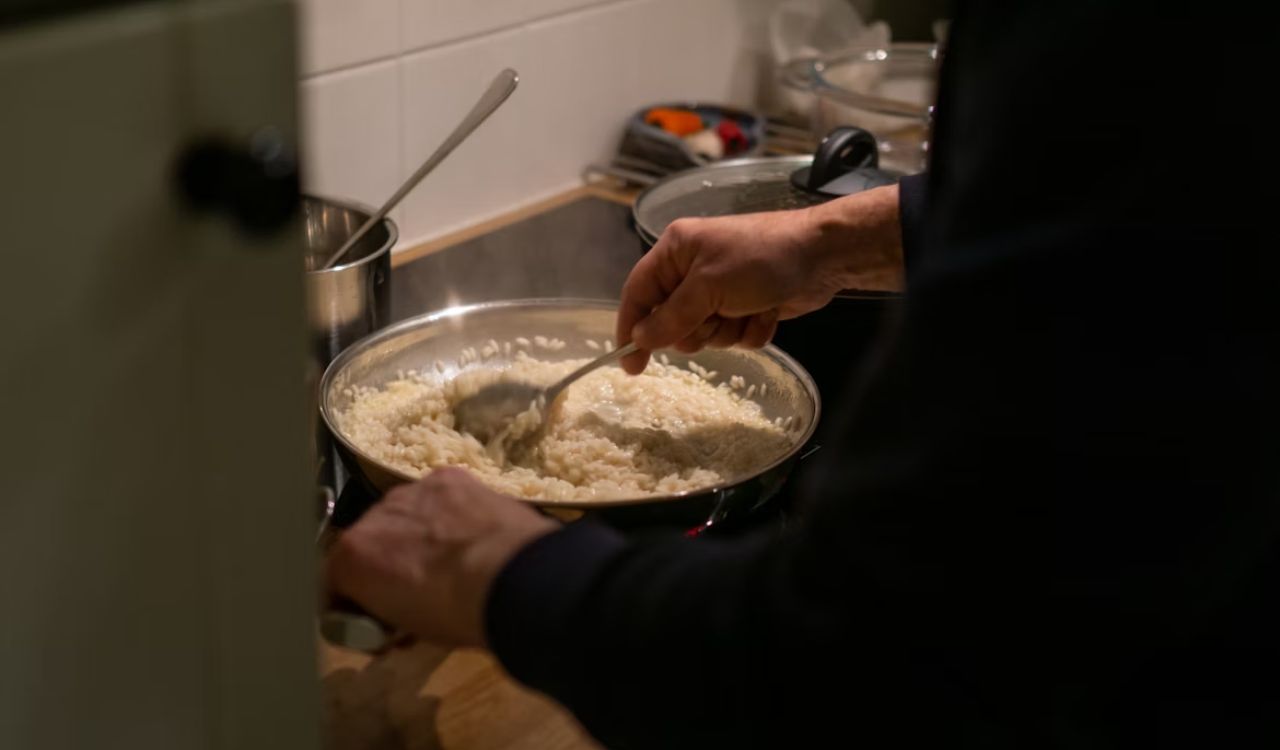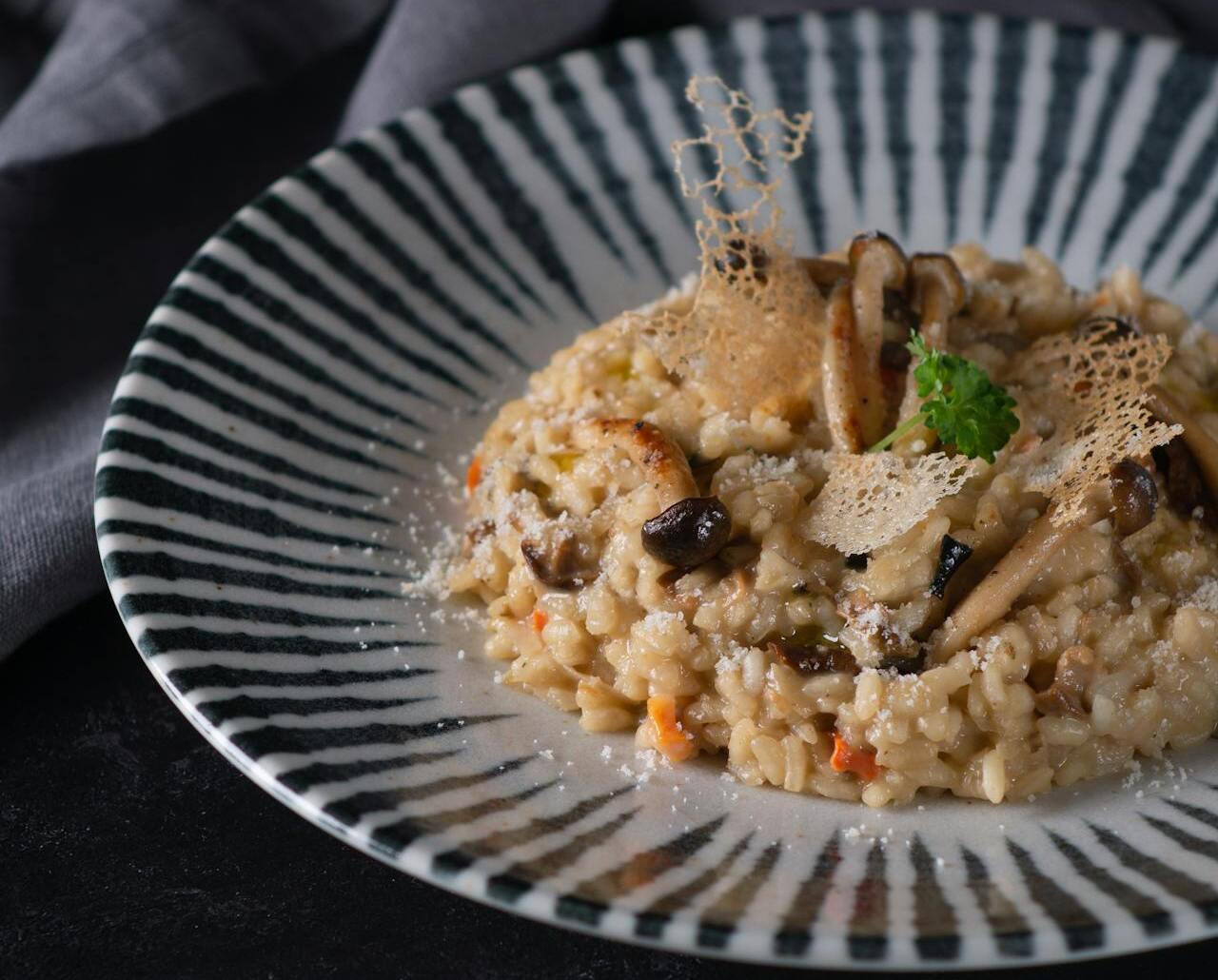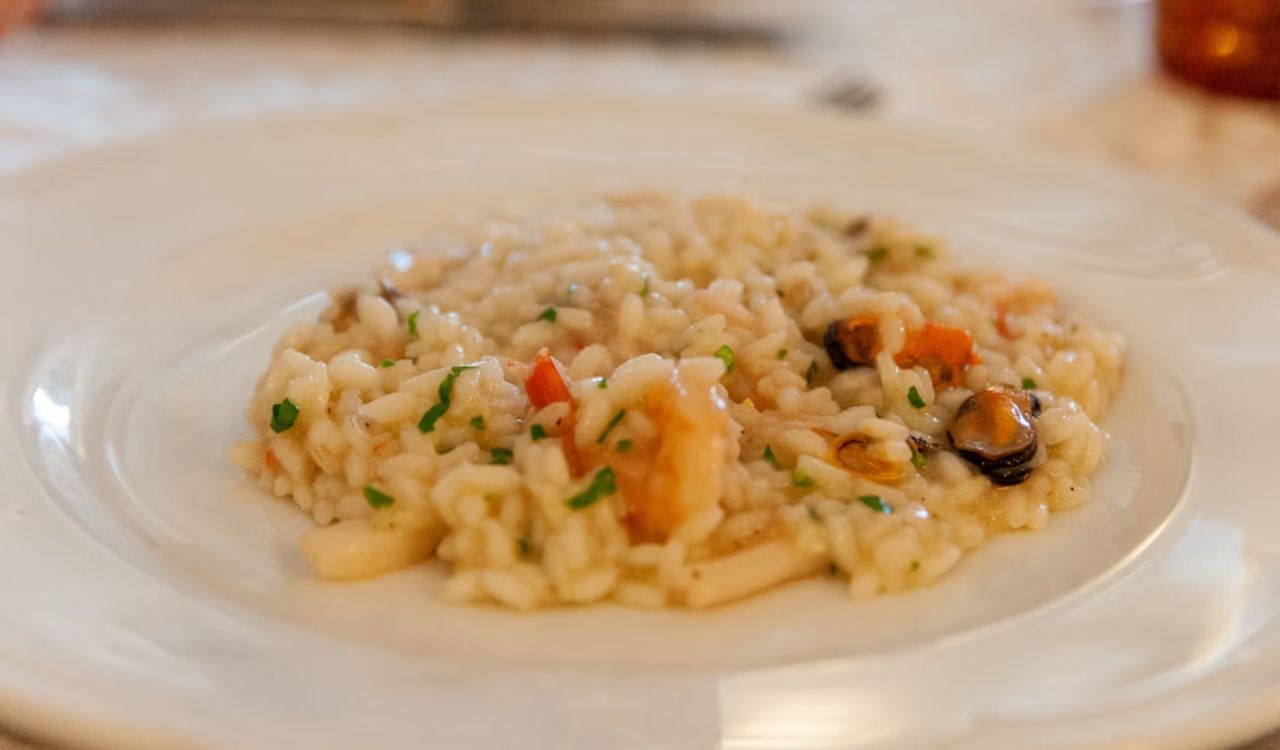The Simple Trick That Makes Perfect Risotto Every Time

Risotto is one of those dishes that intimidates even confident home cooks. Many have heard that it requires constant stirring, exact timing, and perfect texture control.
But here is the truth: perfect risotto is not about being an expert chef or spending an hour in front of the stove. It all comes down to one simple trick that changes everything. With a little patience and understanding of how rice behaves, you can create restaurant-quality risotto every time.
Why Risotto Seems So Tricky

Risotto is a northern Italian rice dish made by slowly cooking short-grain rice in broth until it becomes creamy. Unlike regular steamed or boiled rice, risotto depends on the gradual release of starch to create its velvety consistency. As the rice grains rub against each other during stirring, they release amylopectin, a type of starch that thickens the liquid. The key lies in maintaining that balance between creaminess and a slight bite in each grain.
According to professional chefs and culinary instructors, risotto should take roughly 15 to 18 minutes from the moment the liquid additions begin. During that time, the rice must be stirred and fed with hot stock little by little. This slow hydration and agitation are what turn simple rice into a luxurious dish. Without it, you end up with mushy or undercooked grains swimming in broth.
Sources explain that the secret to the dish’s texture lies not in adding cream or butter, but in how the starch interacts with the cooking liquid. The proper stirring and gradual absorption of hot stock are what give risotto its naturally rich, silky texture.
The Simple Trick: Add Hot Stock Slowly, One Ladle at a Time

The most important rule of risotto is this: never add all your liquid at once. The rice must absorb hot stock gradually so that it cooks evenly and releases starch naturally. This technique may sound tedious, but it is the single step that guarantees consistent, creamy results every time.
When you add cold or large amounts of liquid at once, the rice stops cooking properly. The temperature of the pan drops, and instead of rubbing together to release starch, the grains start steaming. Using hot broth and adding it in small increments prevents this from happening and keeps the rice cooking at a steady pace.
One culinary school emphasizes that warm stock is essential to prevent temperature shock, which slows starch release. The rice should be “fed” broth only as it absorbs each ladle.
How to Master the Technique

- Heat your stock first. Keep broth at a gentle simmer in a separate pot throughout the cooking process.
- Toast the rice. Sauté onion or shallot in olive oil or butter, then stir in arborio or carnaroli rice. Toast for two to three minutes until translucent at the edges. This step enhances flavor and helps the rice maintain structure.
- Deglaze with wine. Add a splash of dry white wine and stir until nearly absorbed. This step brightens the dish and deepens its flavor base.
- Add stock gradually. Pour in one ladle of hot stock and stir gently until mostly absorbed. Continue this cycle until the rice is tender but still slightly firm in the center.
- Finish with butter and cheese. Once the risotto is creamy and flowing, remove it from the heat and stir in cold butter and finely grated Parmesan cheese. This step, called mantecatura, gives the final silky finish.
By following this sequence, the rice transforms into a luscious, cohesive dish that coats the spoon and flows gently, a texture Italians call all’onda, meaning “like a wave.”
Common Mistakes That Can Ruin Risotto

Even small errors can change the outcome. Fortunately, each has an easy fix.
Choosing the Wrong Rice
Long-grain varieties such as jasmine or basmati will never produce creamy risotto. They lack the right starch composition. Stick to short-grain options like arborio, carnaroli, or vialone nano. These contain more amylopectin, which thickens the dish naturally. Rinsing the rice before cooking also removes this essential starch, so skip that step.
Adding Cold or Excess Liquid
Cold stock cools the rice and stops starch release. Adding too much at once floods the pan, creating a soupy mess. The rice should always be partially exposed until the next ladle is added. Patience is crucial.
Overcooking the Rice
Risotto should be creamy yet slightly firm to the bite. Overcooking leads to a mushy, gluey texture. Taste often in the final minutes and stop when the rice feels al dente. The correct texture flows gently when stirred, not clumped or stiff.
Adding Butter or Cheese Too Soon
These ingredients are meant for finishing, not for cooking. Adding them early can cause separation or heaviness. Stir them in only after removing the pot from heat to ensure a smooth, glossy consistency.
Beyond Technique: Flavor, Timing, and Presentation

Once you have mastered the basics, it is time to refine flavor and texture through thoughtful additions and timing.
Use Quality Ingredients
Risotto is a minimalist dish, so ingredient quality makes a big difference. Use freshly grated Parmigiano-Reggiano instead of pre-shredded cheese and high-quality stock made from vegetables, chicken, or seafood. Restaurant-quality risotto often tastes richer because chefs rely on homemade stocks that are naturally concentrated in flavor.
Prepare Mix-ins in Advance
Risotto cooks quickly once started, so having vegetables or proteins prepped and ready ensures they blend seamlessly. Mushrooms, shrimp, or asparagus should be cooked separately before being folded into the finished risotto. This keeps everything perfectly textured.
Make It Ahead if Needed
For busy hosts, there is a simple professional trick: cook the risotto about 80 percent of the way, spread it on a tray to cool, then finish it later by stirring in more hot stock and butter. Restaurants use this technique to serve large crowds without sacrificing texture.
Adjust Texture Before Serving
If the risotto thickens too much while resting, simply stir in a small splash of warm stock before serving. This revives its signature creaminess without changing flavor or overcooking.
Why This Trick Works

Scientifically, the trick works because of how starch and temperature interact. Arborio and similar rice varieties contain two starches: amylose and amylopectin. Amylopectin dissolves more easily, thickening the liquid into a smooth sauce. When you stir and add warm stock gradually, this starch releases evenly, emulsifying with butter and cheese at the end to create that luxurious finish.
This technique also allows more control over texture. Adding stock slowly lets you adjust salt levels, monitor consistency, and stop cooking exactly when the rice reaches perfection. It turns a potentially stressful recipe into a predictable and rewarding process.
Bringing It All Together

Making great risotto is about slowing down and respecting the process. Once you understand how the rice behaves, everything else falls into place. The trick of adding hot stock one ladle at a time is simple, but its impact is powerful. It gives you silky risotto with balanced flavor and perfect bite, every single time.
When you combine this with high-quality ingredients, consistent stirring, and patience, you no longer need to fear this classic dish. Instead, it becomes one of the most satisfying recipes in your repertoire. Serve it straight from the pot, glistening and wavelike, and enjoy the transformation of a few humble ingredients into something extraordinary.
References
- The Key Techniques for Perfect Risotto- SeriousEats.com
- Perfect (Almost) No-Stir Risotto- SeriousEats.com
- Risotto Rules for an Impressive Dish- TheChoppingBlock.com
- How to cook a perfect risotto- TheTinyItalian.com
- The ultimate guide to a perfect risotto: 5 essential steps- Gastronomixs.com
- Parmesan Risotto Recipe (with Video)- NatashasKitchen.com
- How to Make the Perfect Risotto- RiceSelect.com







